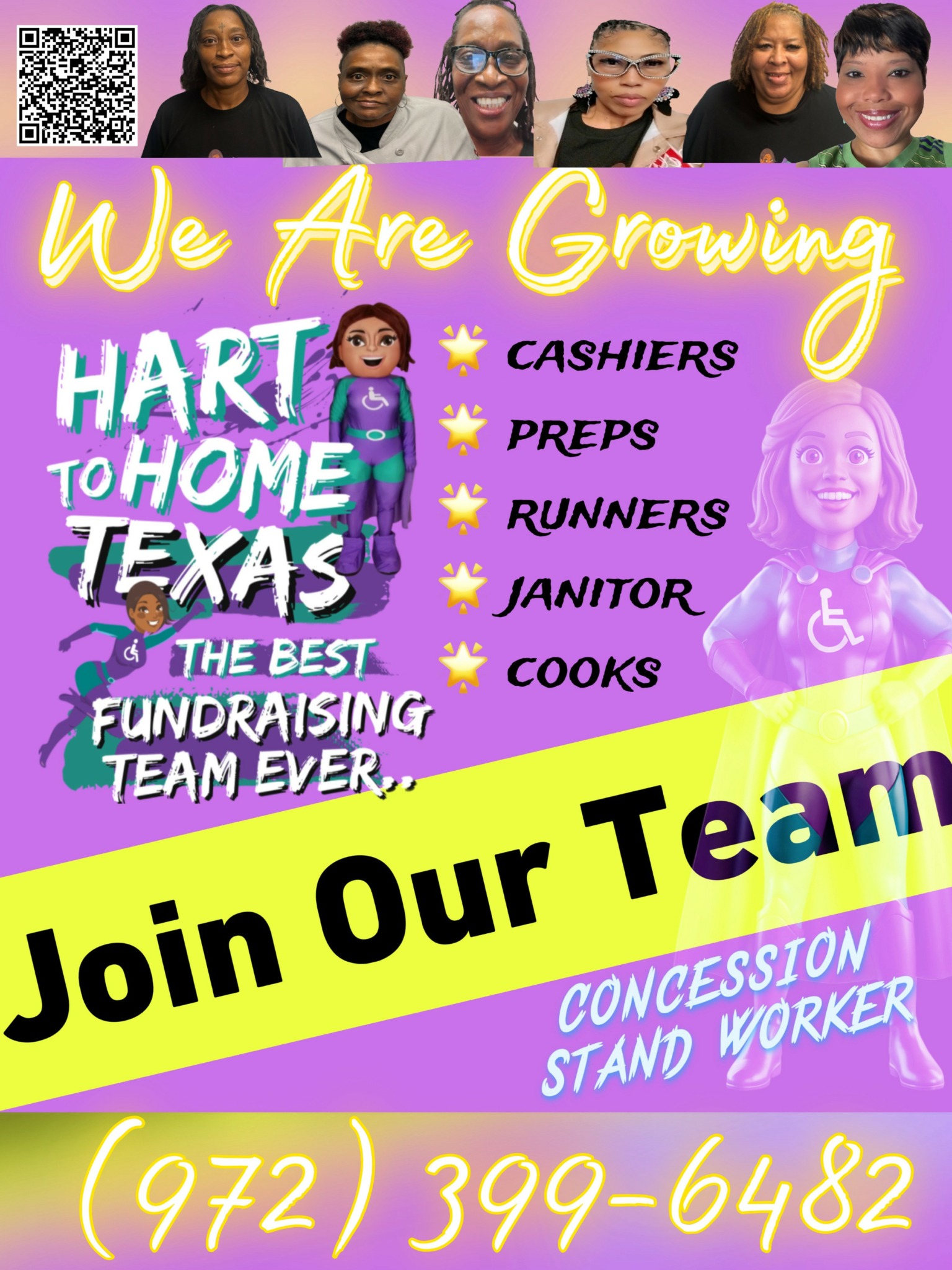We’re excited to introduce you to the always interesting and insightful Sandra Rios. We hope you’ll enjoy our conversation with Sandra below.
Hi Sandra, thanks for joining us today. Risk taking is something we’re really interested in and we’d love to hear the story of a risk you’ve taken.
A Calculated Risk Brings a New Sunrise for Hart to Home Texas
A bold move by Sandra Rios and her business partner David Rios has transformed their partnership into a thriving, life-changing venture. What began as a professional collaboration to improve housing placements for veterans, seniors, people with mental illness, and individuals with disabilities has evolved into a powerful personal and professional union.
Sandra Rios founded Hart to Home Texas to help clients access Medicare, Medicaid, food assistance, free life alerts, and affordable housing for low-income families. She took a calculated risk by meeting with David Rios, a competitor who owned Oasis Senior Advisor, to discuss a potential partnership. The aim: to combine strengths and better serve those in need.
“I took a risk, and it turned out to be the best decision I ever made,” Sandra said. “Partnering with another placement agent allowed us to reach clients who needed our services and make a meaningful impact.”
Over seven years, the two built a strong working relationship. They navigated competition, collaboration, and the daily realities of running a social services-focused business. Their professional bond deepened, and personal boundaries began to blur in unexpected ways.
In a surprising turn, Sandra and David also found personal compatibility. Their relationship evolved from colleagues to life partners, and on December 7, 2024, they married. This transition from business partners to a married couple marks a new chapter in their journey.
Today, Hart to Home Texas remains active in housing initiatives and concession stands that create job opportunities for up to 90 people. David now operates under the name Paloma Living, a rebranding that reflects their broader mission: to give clients more freedom and access to essential services.
“We’re proud of what we’ve become as a power couple,” Sandra said. “Sometimes, taking a risk in business can lead to a better life for yourself and the people you serve. God helps dreams come true.”
As they approach their first anniversary in 2025, the couple continues to advocate for affordable housing, accessible healthcare, and inclusive employment opportunities. Their story highlights how courage in business can lead to personal happiness and lasting community impact.
Sandra, before we move on to more of these sorts of questions, can you take some time to bring our readers up to speed on you and what you do?
Sandra Rios — Founding Hart to Home Texas
From a life-altering medical challenge to a mission-driven entrepreneur, my journey has shaped every decision I make for Hart to Home Texas. When I was 14, a sudden illness left me bedbound for years, facing severe mobility loss, sight problems, and weight gain. I spent years navigating hospital tests, a series of shifting diagnoses, and the emotional toll of relying on home healthcare.
A turning point came through a friend who urged me to seek a different caregiver and therapy team. With persistence, I regained mobility through intensive physical therapy, weight management, and, most importantly, the determination to reclaim my life. I learned first-hand how access to the right care, the right supports, and the right people can turn a crisis into a conversion—from dependency to independence.
Today, I’m the founder and driving force behind Hart to Home Texas, a business and nonprofit organization dedicated to helping people with disabilities, veterans, seniors, and low-income individuals find housing solutions, healthcare access, and essential services. My life’s work is rooted in the belief that it truly takes a village to help someone transform their life.
What We Do
Hart to Home Texas operates at the intersection of housing, healthcare, and social support. Our offerings include:
Housing solutions for seniors, veterans, people with disabilities, and those with low incomes (from group homes to assisted living and memory care referrals).
Guidance to access critical benefits: Medicare, Medicaid, food assistance, and life-alert services.
Care coordination: referrals to home healthcare agencies and hospice, with a focus on compassionate, person-centered planning.
Financial empowerment: payee services for clients who need assistance managing disability checks and finances; medical power of attorney support.
Notary services: traveling notary available across Texas.
Advocacy and community support: fundraising events and partnerships to support housing, healthcare access, and essential services for those in need.
What Problems We Solve
Fragmented access to housing and healthcare for vulnerable populations.
Difficulties navigating benefits systems and funding sources.
Gaps in care coordination when transitioning between services (healthcare, housing, social support).
The financial and logistical barriers that prevent people with disabilities and seniors from living with dignity and independence.
A lack of community connection and ongoing advocacy for long-term solutions.
Our approach is holistic: we don’t just refer people—we stay involved, helping clients navigate systems, secure resources, and, when possible, find sustainable housing and caregiving arrangements that fit their unique needs.
What Sets Us Apart
Personal Experience: My healing journey fuels our empathy, urgency, and commitment. I’ve lived the barriers our clients face, which informs every decision we make.
Comprehensive Services: We combine housing placement, benefits assistance, care coordination, financial management support, and notary services into one integrated team.
Lifelong Commitment: We aim for ongoing relationships with clients, not one-off referrals. We strive to be a trusted partner “in your village” for the long term.
Community-Driven Fundraising: We actively partner with stadiums and organizations to fund feeding programs, housing initiatives, and essential services for the homeless and underserved.
Nonprofit and Social Enterprise Synergy: Hart to Home Texas blends for-profit efficiency with nonprofit mission, maximizing impact while sustaining operations.
What I’m Most Proud Of
Building a resilient organization that grew from a single employee to a team of 90, driven by compassion and results.
The tangible, positive changes in clients’ lives—stable housing, improved access to healthcare, and greater independence.
Creating a reliable, compassionate resource in Texas for veterans, seniors, people with disabilities, and low-income families.
Turning personal adversity into purpose—using what I’ve learned to uplift others.
What I Want People to Know
Hart to Home Texas is more than a referral service; it’s a long-term partner in health, housing, and hope.
We operate with integrity, client-first focus, and a village mindset: it takes a community to transform a life.
We are actively growing to serve more people while maintaining personalized, respectful support.
We welcome collaborations with like-minded organizations, donors, and government partners who share our mission to expand access to housing and essential services.
Contact & Call to Action
If you or someone you know could benefit from housing solutions, benefits assistance, or care coordination, please reach out.
For partnerships, sponsorships, or fundraising collaborations that expand our impact, we’d love to hear from you.
Email: [email protected]
Office phone: 972-869-1185
Business cell: 972-399-6482
Website: harttohometexas.com
Facebook: Hart to Home Texas
Hours of operation: Monday–Friday, 9:00 AM – 5:00 PM
Service area: Dallas–Fort Worth metroplex, Kaufman, McKinney, Frisco, and Collin County areas
We’d love to hear the story of how you built up your social media audience?
Building an Audience on Social Media: Our Story and Quick Start Guide
Here’s a candid look at how Hart to Home Texas grew its social media presence, followed by practical tips you can use if you’re just starting out.
Our Story: From Foundation to Following
Start with a Mission, Not a Metric**
We began by centering our real-world impact: helping veterans, seniors, and people with disabilities access housing and essential services. That mission created a clear narrative and gave us authentic content to share.
Share the Human Side**
People connect with stories. We combined client success stories (with consent), behind-the-scenes looks at our housing referrals process, and personal milestones from Sandra and David. This mix kept our feed personal, not overly promotional.
Consistency Over Perfection**
We posted regularly, even when content wasn’t “perfect.” Regularity helped audiences know when to expect new updates and helped the platforms’ algorithms recognize our activity.
Education That Feels Helpful**
We created bite-sized, practical posts: how to access Medicare/Medicaid, how to find affordable housing, and what steps to take during care transitions. Educational posts positioned us as a trustworthy resource.
Community Engagement Is Key**
We didn’t just post; we engaged. We answered comments, joined relevant local groups, and collaborated with partners (housing providers, healthcare organizations, sponsors) for mutual shout-outs and co-hosted events.
Showcase Real People, Respectfully**
With consent, we featured clients’ journeys and testimonials. We protected privacy and dignity, which built trust and encouraged others to share their own stories.
Leverage Visuals and Short Formats**
We used clear photos, short videos, and simple graphics to explain complex topics. Platforms favor engagement on video and reels, even for service-oriented content.
Localized Content for Local Impact**
We highlighted Dallas–Fort Worth and surrounding areas, tagging local partners and landmarks. This helped us appear in local feeds and searches, attracting regional followers and potential donors.
Measure, Learn, Adapt**
We tracked what worked (types of posts, best times, formats) and refined our approach every few weeks. Data-guided tweaks beat guesswork.
Brand Cohesion**
We kept a consistent voice, color palette, and messaging across platforms. A cohesive brand helps new visitors recognize you instantly.
Practical Advice for Those Starting Out
1) Define Your North Star
Clarify: Who are you helping? What value do you provide? What action do you want followers to take (visit website, sign up for resources, donate)?
2) Choose the Right Platforms
Start with 1–2 where your audience spends time. For community-focused, service-oriented work, Facebook and Instagram often work well for local reach; LinkedIn can help with partnerships; TikTok or YouTube can scale storytelling if you have the resources.
3) Create a Simple Content Plan
Content pillars (e.g., client stories, how-to guides, partner spotlights, behind-the-scenes, event recaps).
Aim for at least 3–4 posts per week to stay visible.
4) Prioritize Consent and Privacy
Obtain written or clear consent for client stories and images. Anonymize sensitive details when needed.
5) Start with Educational Value
Post quick, actionable tips: “How to apply for Energy Assistance in Texas” or “Steps to secure affordable housing options.” Help first, promote second.
6) Use Clear CTAs
End posts with a simple next step: call, email, visit the website, or attend an upcoming event.
7) Engage Daily, Not Just Publish
Reply to comments within 24 hours. Comment on related local pages. Share relevant community content with thoughtful context.
8) Collaborate to Expand Reach
Partner with housing providers, healthcare groups, nonprofits, and sponsors for co-created content and cross-promotion.
9) Track What Matters
Monitor reach, engagement (likes, comments, shares), and clicks. Note which posts drive website visits or inquiries.
10) Be Authentic and Patient
Social media is a long game. Growth is often incremental. Authenticity builds trust, which compounds over time.
Quick-start Action Plan (14-Day Kickoff)
Day 1–2: Define audience personas and 3 content pillars.
Day 3–4: Audit existing assets (photos, testimonials, logos). Prepare 5–7 evergreen posts.
Day 5–7: Set up a simple content calendar (Mon/Wed/Fri posts; 1 story per day if possible).
Day 8–10: Reach out to 2–3 local partners for collaboration (co-hosted post or joint live session).
Day 11–13: Publish a “Welcome to Hart to Home Texas” post and a client success story (with consent).
Day 14: Review metrics, adjust topics, and plan the next 2 weeks.
Metrics to Watch (Beginner-Friendly)
Reach and impressions (how many people saw your content)
Engagement rate (likes + comments + shares per post)
Profile visits and website clicks
Direct inquiries or referrals attributed to social posts
Follower growth over time (not just vanity metrics)
Final Thoughts
Building an audience isn’t about chasing numbers; it’s about building trust and delivering real value to your community. For Hart to Home Texas, authenticity, consistency, and a genuine commitment to helping people transform their lives have been the pillars of growth. If you stay anchored in your mission and stay responsive to your community, your audience will follow—and they’ll become advocates who move with you from visibility to impact.
Any advice for growing your clientele? What’s been most effective for you?
Most Effective Client-Growth Strategy for Hart to Home Texas
Based on our experience building Hart to Home Texas, the single most effective strategy has been a holistic, community-centered approach that combines credibility, accessibility, andoyou-serve-long-term relationships. Here’s how that translates into practical actions:
1) Lead with the Mission,, Not Just Services
Center every outreach on the real-world outcomes: safer housing, easier access to benefits, and better care coordination.
Use client stories (with consent) and concrete outcomes to illustrate impact, not just services offered.
2) Build Trust Through Care Coordination, Not Just Referrals
Position Hart to Home Texas as an ongoing partner in clients’ journeys, from housing referrals to benefits navigation and financial support.
Follow up after referrals, track outcomes, and adjust plans with clients and partners.
3) Localized, Multi-Channel Outreach
Invest in a strong local presence: participate in community events, partner with hospitals, senior centers, veterans groups, housing providers, and nonprofits.
Use local media, Facebook/Instagram for community updates, and LinkedIn for partner outreach.
4) Strong Partnerships and Co-Branding
Develop formal partnerships with housing providers, healthcare organizations, and sponsors.
Co-host events, joint webinars, and co-branded materials to extend reach and credibility.
5) Education as Lead, With Clear Next Steps
Create practical, bite-sized content: how-to guides for Medicare/Medicaid, housing options, and care transitions.
End every touchpoint with a clear call to action (CTA): a link to a resource page, a consultation, or an upcoming event.
6) Client-Centric Experience That Encourages Referrals
Ensure accessibility in communication: plain language, multilingual options if needed, flexible meeting times.
Build a referral-friendly culture: happy clients become advocates who share stories with their networks.
7) Transparent Metrics and Feedback
Track key metrics: inquiries generated, conversion to consultations, housing placements, and follow-up engagement.
Collect feedback from clients and partners to improve services and demonstrate impact to funders and collaborators.
8) Compliance, Consent, and Dignity
Always secure informed consent for stories and photos.
Protect client privacy and dignity in all communications.
9) Operational Excellence Behind the Scenes
Streamline intake processes, keep accurate client records, and coordinate with payee services and medical power of attorney offerings.
Maintain consistent branding and messaging to reinforce trust across channels.
10) Community Give-Back and Visibility
Regular fundraising and service events that serve both clients and the wider community (e.g., feeding programs, housing drives) raise awareness and goodwill.
If you’d like, I can tailor these into a concrete 90-day client-growth plan for Hart to Home Texas, including:
Target personas and messaging
A 12-week outreach calendar with partner milestones
Sample outreach emails, social posts, and event templates
KPIs to track and a simple dashboard to monitor progress
Contact Info:
- Website: harttohometexas.com
- Instagram: Hart_to_Home_Texas
- Facebook: https://www.facebook.com/share/17in8U6h7v/?mibextid=wwXIfr










